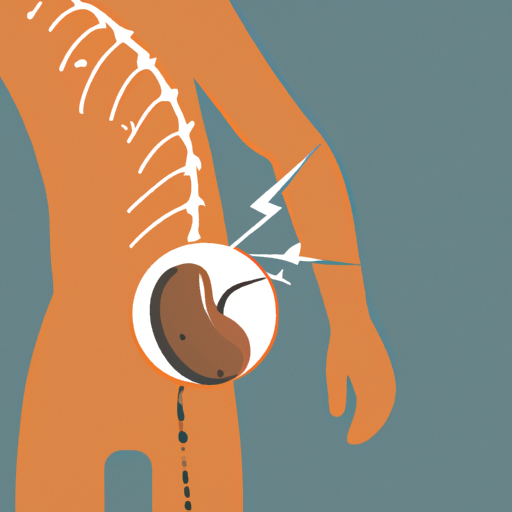- Your cart is empty
- Continue Shopping
Comprehensive Guide to Kidney Stones: From Diagnosis to Treatment and Prevention

Kidney stones can be an excruciatingly painful condition that affects millions of people worldwide. These tiny, hard deposits formed in the kidneys can cause a range of symptoms, including severe back pain, blood in urine, and frequent urination. In this article, we will delve into the causes, symptoms, and diagnosis of kidney stones, as well as explore the various treatment options available. Additionally, we will discuss the importance of preventive measures, such as lifestyle changes and dietary recommendations, to reduce the risk of developing kidney stones. Whether you have personally experienced kidney stones or are simply curious about this common medical condition, this article aims to provide a comprehensive understanding of kidney stones and empower you with the knowledge to effectively manage and prevent them.
1. Understanding Kidney Stones: Causes, Symptoms, and Diagnosis
Kidney stones are small, hard mineral deposits that form in the kidneys. They can vary in size, ranging from a grain of sand to a larger stone that can be as big as a golf ball. These stones can cause severe pain and discomfort when they obstruct the urinary tract.
Understanding the causes of kidney stones is crucial in preventing their formation. The most common type of kidney stone is calcium oxalate stone, which forms when calcium combines with oxalate in the urine. Other types include uric acid stones, struvite stones, and cystine stones. Factors that contribute to the development of kidney stones include dehydration, a diet high in sodium and oxalate, obesity, certain medical conditions like urinary tract infections or gout, and a family history of kidney stones.
Symptoms of kidney stones can vary depending on their size and location. Small stones may not cause any noticeable symptoms and can pass through the urinary tract without causing much discomfort. However, larger stones can cause excruciating pain in the back, side, or lower abdomen. Other symptoms include blood in the urine, frequent urination, cloudy or foul-smelling urine, and a persistent urge to urinate.
To diagnose kidney stones, several diagnostic tests may be conducted. These include a physical examination, urine tests to check for blood or minerals associated with stone formation, imaging tests such as an X-ray, ultrasound, or CT scan, and blood tests to evaluate kidney function and identify any underlying causes.
Treatment options for kidney stones depend on the size and location of the stone, as well as the symptoms experienced by the patient. Small stones that do not cause significant pain or obstruction can often be managed through increased fluid intake to help flush out the stone naturally. Pain relief medications may be prescribed to manage discomfort during this process.
For larger stones that cause severe pain or obstruct the urinary tract, more invasive treatments may be necessary. These can include extracorporeal shock wave lithotripsy (ESWL), a procedure that uses shock waves to break the stone into smaller fragments that can
2. Effective Treatment Options for Kidney Stones: Medical and Natural Approaches
When it comes to kidney stones, effective treatment options are crucial to alleviate the excruciating pain and prevent further complications. There are two main approaches to treating kidney stones: medical interventions and natural remedies. While medical interventions are typically recommended for larger stones or cases with severe symptoms, natural approaches can be effective for smaller stones or as preventive measures.
1. Medical Interventions:
a. Extracorporeal Shock Wave Lithotripsy (ESWL): This non-invasive procedure uses shock waves to break large kidney stones into smaller pieces, making them easier to pass through the urinary tract. ESWL is commonly used for stones that are smaller than 2 centimeters and located in the kidney or upper ureter.
b. Ureteroscopy (URS): URS involves the use of a thin tube called a ureteroscope to remove or break up stones in the ureter or kidney. It is particularly useful for stones that have migrated from the kidney to the ureter or are larger in size. URS can also be combined with laser lithotripsy to fragment the stones.
c. Percutaneous Nephrolithotomy (PCNL): This surgical technique is employed for large or complex kidney stones that cannot be effectively treated with other methods. PCNL involves making a small incision in the back and inserting a nephroscope to remove or break the stones. It is typically recommended when ESWL or URS is not feasible or successful.
2. Natural Approaches:
a. Hydration: Drinking an ample amount of water throughout the day can help flush out small stones and prevent the formation of new ones. Adequate hydration dilutes the urine, reducing the concentration of minerals that contribute to stone formation.
b. Dietary Modifications: Certain dietary changes can aid in the prevention and management of kidney stones. Limiting sodium intake, avoiding high-oxalate foods (such as spinach, rhubarb, and beetroot), and reducing animal protein consumption may help minimize the risk of stone formation. Additionally, increasing dietary calcium from
3. Preventing Kidney Stones: Lifestyle Changes and Dietary Recommendations
Preventing Kidney Stones: Lifestyle Changes and Dietary Recommendations
Kidney stones can be an excruciatingly painful condition, and once you’ve experienced it, the last thing you want is a recurrence. Fortunately, there are several lifestyle changes and dietary recommendations that can help prevent the formation of kidney stones. By adopting these practices, you can significantly reduce the chances of developing this painful condition.
1. Stay Hydrated: One of the most crucial steps in preventing kidney stones is to stay adequately hydrated. Drinking plenty of water throughout the day helps dilute the urine and flush out any potential stone-forming substances. Aim to drink at least 8-10 glasses of water daily, or more if you live in a hot climate or engage in intense physical activity.
2. Watch Your Sodium Intake: High levels of sodium in the diet can increase the amount of calcium excreted in urine, leading to the formation of calcium-based kidney stones. Limiting your sodium intake can help prevent such stones. Avoid processed and packaged foods, as they are usually high in sodium. Instead, opt for fresh fruits, vegetables, and whole grains that are naturally low in sodium.
3. Moderate Animal Protein Consumption: Animal proteins, such as meat, fish, and poultry, can increase the level of uric acid and calcium in urine, making it easier for kidney stones to form. While it’s not necessary to completely eliminate animal protein from your diet, moderation is key. Aim to have a balanced diet that includes plant-based proteins like legumes, tofu, and nuts.
4. Increase Citrus Intake: Citrus fruits, like lemons and oranges, contain citrate, a compound that inhibits the formation of certain types of kidney stones. Consuming citrus fruits or drinking their juices regularly can help raise the citrate levels in urine, reducing the risk of stone formation. Additionally, lemon water can be a refreshing and hydrating alternative to plain water.
5. Limit Oxalate-Rich Foods: Oxalate is a substance found in many foods that

